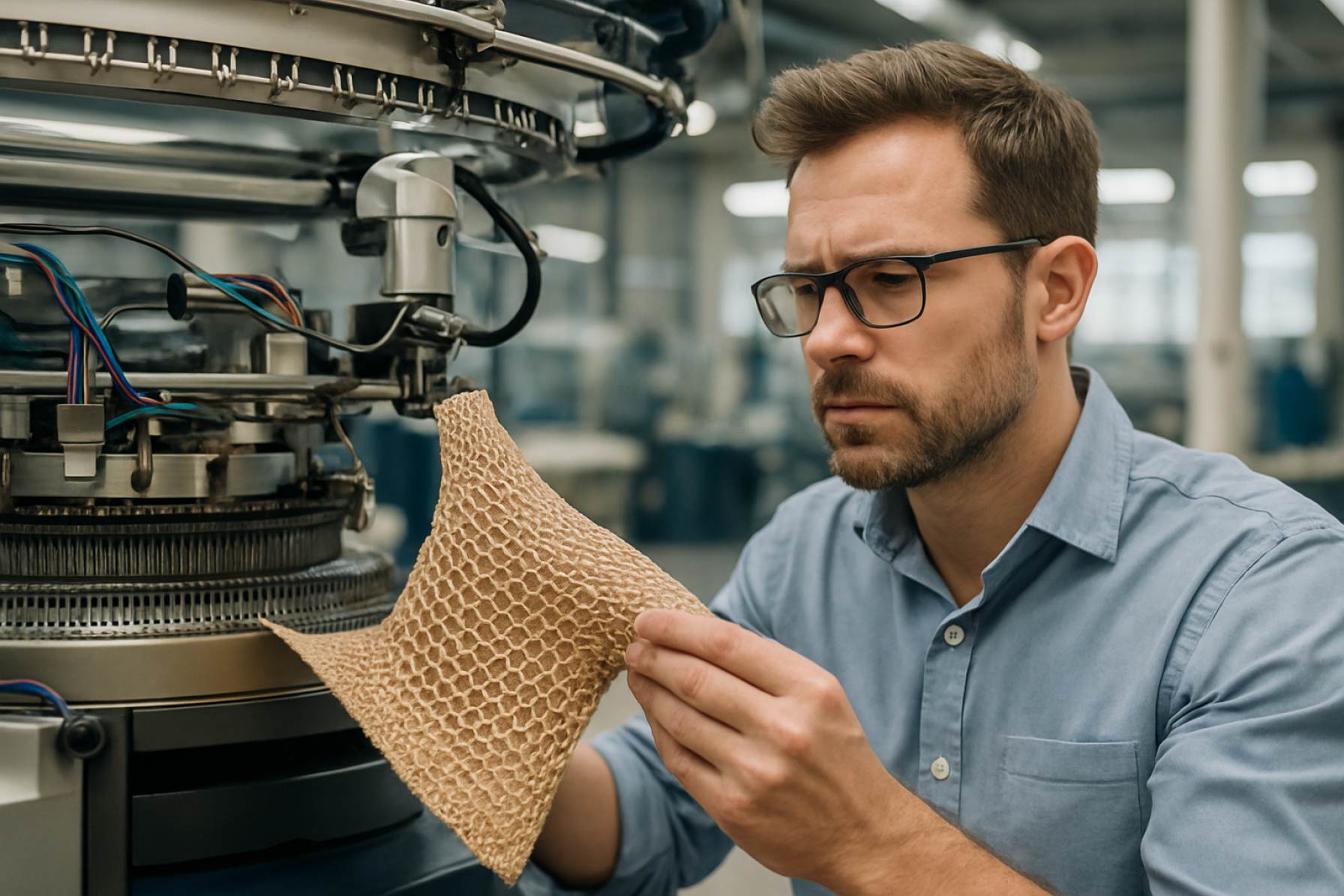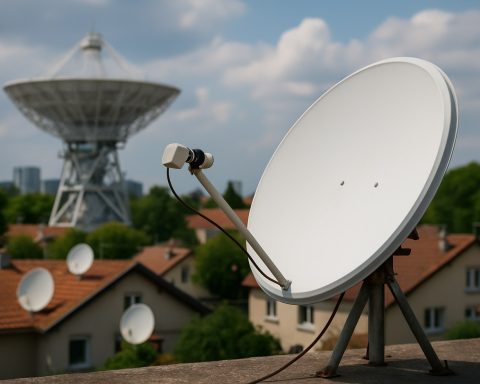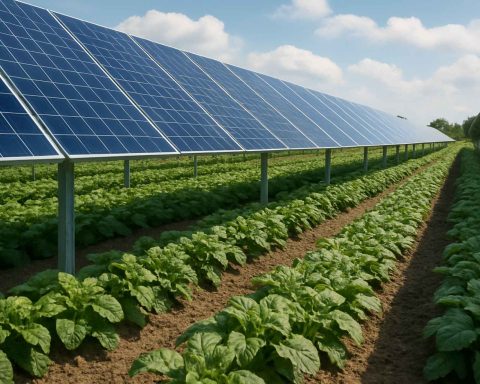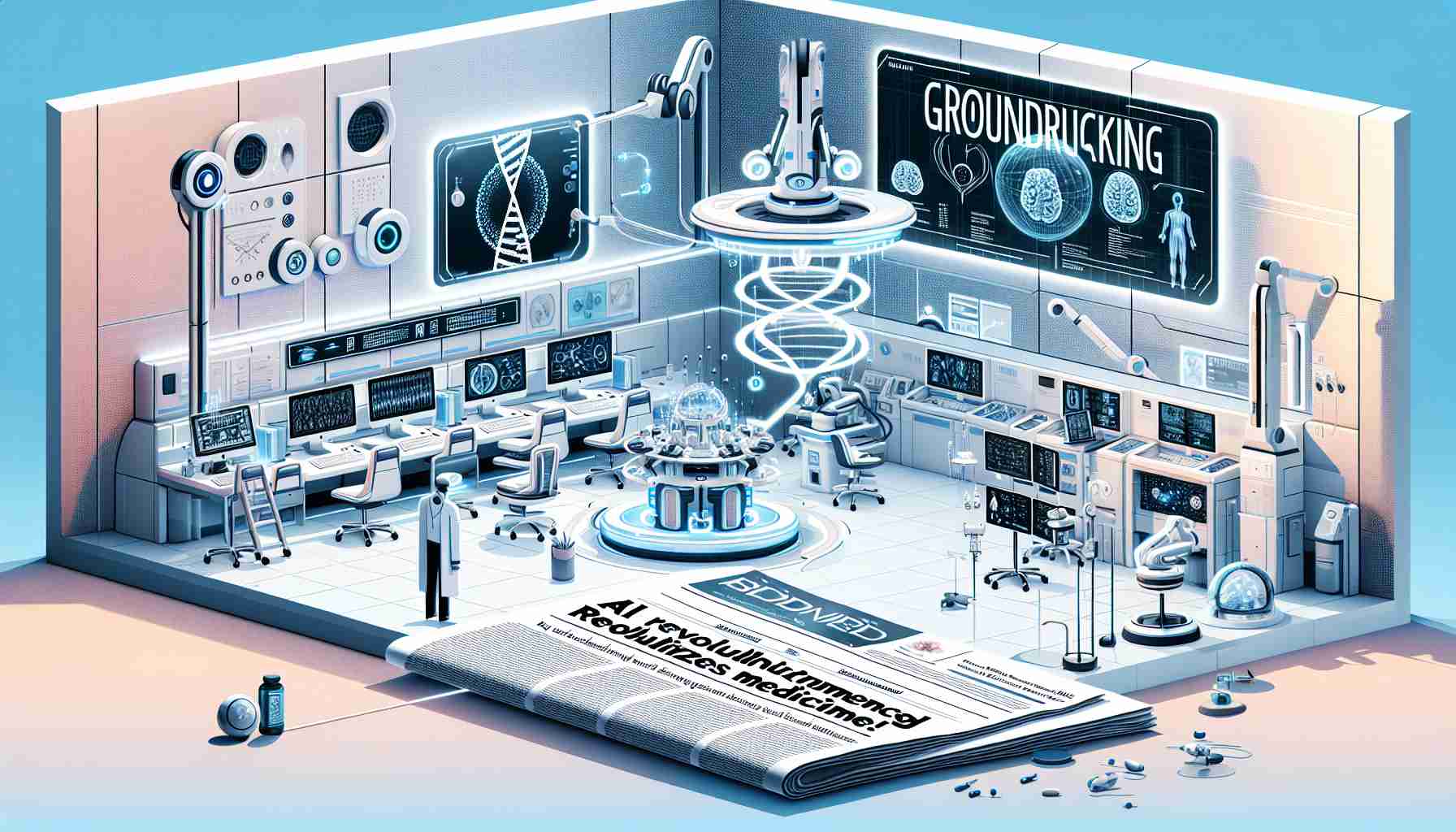Auxetic Textile Manufacturing in 2025: How Advanced Materials Are Reshaping Performance Fabrics and Unlocking New Market Frontiers. Explore the Innovations, Market Dynamics, and Strategic Opportunities Driving the Next Wave of Textile Evolution.
- Executive Summary: Key Insights and 2025 Outlook
- Market Size, Growth Forecasts, and Regional Trends (2025–2030)
- Core Auxetic Mechanisms: Materials Science and Fabrication Techniques
- Emerging Applications: Sportswear, Medical, Defense, and Beyond
- Competitive Landscape: Leading Manufacturers and Innovators
- Supply Chain and Raw Material Considerations
- Intellectual Property, Standards, and Regulatory Developments
- Investment, Funding, and Partnership Trends
- Challenges, Barriers, and Risk Factors
- Future Outlook: Technology Roadmap and Strategic Recommendations
- Sources & References
Executive Summary: Key Insights and 2025 Outlook
Auxetic textile manufacturing, characterized by the production of fabrics that exhibit a negative Poisson’s ratio—expanding laterally when stretched—has transitioned from laboratory research to early-stage commercialization as of 2025. This unique property is driving interest across sectors such as sportswear, medical devices, protective equipment, and aerospace, where enhanced energy absorption, improved comfort, and superior mechanical performance are highly valued.
In 2024 and into 2025, several industry leaders and innovative startups have accelerated the development and scaling of auxetic textiles. Toray Industries, Inc., a global leader in advanced fibers and textiles, has reported ongoing R&D investments in auxetic structures, focusing on applications in high-performance sports apparel and impact-resistant gear. Similarly, Teijin Limited has announced pilot-scale production of auxetic nonwovens, targeting the medical and automotive sectors for their enhanced cushioning and conformability.
Manufacturing methods have evolved rapidly, with advances in 3D knitting, weaving, and additive manufacturing enabling more complex and scalable auxetic patterns. SGL Carbon, known for its expertise in carbon-based materials, has begun collaborating with research institutions to integrate auxetic geometries into composite textiles for aerospace and defense applications. Meanwhile, Freudenberg Group has explored auxetic nonwovens for filtration and personal protective equipment, leveraging their global manufacturing footprint to pilot new product lines.
Despite these advances, challenges remain in achieving cost-effective mass production and consistent quality at scale. The sector is witnessing increased patent activity and strategic partnerships, as companies seek to secure intellectual property and accelerate commercialization. Industry bodies such as AATCC (American Association of Textile Chemists and Colorists) and ITA (Institut für Textiltechnik, RWTH Aachen University) are actively supporting standardization and knowledge transfer, which is expected to facilitate broader adoption.
Looking ahead to the next few years, the outlook for auxetic textile manufacturing is positive, with market entry of first-generation products anticipated in sports, healthcare, and industrial safety by 2026. Continued investment from established textile manufacturers and cross-sector collaborations are likely to drive down costs and expand the range of applications. As manufacturing technologies mature, auxetic textiles are poised to become a disruptive force in functional and technical textile markets worldwide.
Market Size, Growth Forecasts, and Regional Trends (2025–2030)
The global auxetic textile manufacturing sector is poised for significant growth between 2025 and 2030, driven by increasing demand for advanced materials in sportswear, medical devices, defense, and industrial applications. Auxetic textiles, characterized by their negative Poisson’s ratio, offer enhanced mechanical properties such as improved energy absorption, tear resistance, and flexibility, making them attractive for a range of high-performance uses.
As of 2025, the market remains in a nascent but rapidly evolving stage, with a handful of pioneering companies and research institutions leading commercialization efforts. Notably, Fibre2Fashion reports that the integration of auxetic structures into woven and knitted fabrics is gaining traction, particularly in Europe and Asia-Pacific, where textile innovation ecosystems are robust. The United Kingdom, Germany, and Japan are emerging as key hubs, supported by strong academic-industry collaborations and government-backed R&D initiatives.
Several manufacturers are scaling up pilot production lines to meet growing interest from sectors such as sports equipment and protective clothing. For example, Freudenberg Group, a global leader in technical textiles, has announced investments in research and development of auxetic nonwovens for filtration and impact protection applications. Similarly, Toray Industries in Japan is exploring auxetic fiber blends for next-generation performance apparel and medical textiles, leveraging its expertise in advanced polymer science.
North America is also witnessing increased activity, with companies like DuPont investigating auxetic structures for use in personal protective equipment and smart textiles. The region benefits from a strong defense sector and a growing focus on wearable technology, both of which are expected to drive demand for auxetic materials through 2030.
Looking ahead, the auxetic textile market is projected to experience double-digit annual growth rates, with the Asia-Pacific region anticipated to outpace other geographies due to its large manufacturing base and rising investments in technical textiles. Key challenges remain, including scaling up cost-effective production methods and standardizing testing protocols, but ongoing innovation and cross-sector partnerships are expected to accelerate commercialization. As more companies enter the field and end-user awareness increases, auxetic textiles are likely to transition from niche applications to broader adoption across multiple industries by the end of the decade.
Core Auxetic Mechanisms: Materials Science and Fabrication Techniques
Auxetic textile manufacturing in 2025 is characterized by rapid advancements in both materials science and fabrication techniques, driven by the growing demand for high-performance, multifunctional fabrics in sectors such as sportswear, medical devices, and protective equipment. Auxetic textiles, which exhibit a negative Poisson’s ratio—expanding laterally when stretched—are being developed using a variety of core mechanisms, including re-entrant geometries, rotating units, and chiral structures. These mechanisms are realized through both fiber-level engineering and innovative weaving, knitting, and nonwoven processes.
A significant trend in 2025 is the integration of advanced polymers and composite fibers to enhance auxetic behavior and durability. Companies such as DuPont and Toray Industries are at the forefront, leveraging their expertise in high-performance fibers like Kevlar and advanced polyamides to create auxetic yarns and fabrics with improved mechanical properties and resilience. These materials are often combined with elastomers or shape-memory polymers to enable tunable auxetic responses, which are critical for applications requiring adaptability and impact resistance.
On the fabrication side, digital manufacturing techniques are gaining prominence. 3D knitting and additive manufacturing allow for precise control over textile architecture, enabling the production of complex auxetic patterns at scale. Stoll, a leader in flat knitting technology, has introduced programmable knitting machines capable of producing textiles with engineered auxetic structures, facilitating rapid prototyping and customization for diverse end uses. Similarly, Shima Seiki is advancing whole-garment knitting systems that can seamlessly integrate auxetic features into wearable products.
Collaborations between textile manufacturers and research institutions are accelerating the commercialization of auxetic textiles. For example, Freudenberg Performance Materials is working with academic partners to develop nonwoven auxetic fabrics for filtration and medical applications, focusing on scalable production methods and consistent quality control. These partnerships are essential for translating laboratory-scale innovations into industrial-scale manufacturing.
Looking ahead, the outlook for auxetic textile manufacturing is robust. Industry stakeholders anticipate that ongoing improvements in material formulations, digital fabrication, and process automation will reduce production costs and expand the range of auxetic textile applications. As regulatory standards for protective and medical textiles evolve, manufacturers are expected to invest further in R&D to meet stringent performance criteria, positioning auxetic textiles as a key component of next-generation functional fabrics.
Emerging Applications: Sportswear, Medical, Defense, and Beyond
Auxetic textiles—materials that become thicker perpendicular to applied force—are gaining momentum in advanced manufacturing, with 2025 marking a pivotal year for their commercial and research-driven applications. The unique mechanical properties of auxetic fabrics, such as enhanced energy absorption, improved indentation resistance, and superior conformability, are driving their adoption across sportswear, medical, defense, and other high-performance sectors.
In sportswear, auxetic textiles are being explored for their ability to provide adaptive fit and impact protection. Companies like Nike, Inc. have filed patents and conducted research into auxetic structures for footwear and apparel, aiming to deliver products that offer both flexibility and support during dynamic movement. Similarly, Adidas AG has investigated auxetic mesh designs to enhance breathability and comfort in athletic gear. These developments are expected to reach broader commercial availability in the next few years, as manufacturing techniques such as 3D knitting and advanced weaving become more scalable.
The medical sector is another key area of growth. Auxetic bandages and compression garments, which can conform more closely to body contours and distribute pressure evenly, are under development by textile innovators and medical device manufacturers. Smith & Nephew plc, a global medical technology company, has explored the integration of auxetic materials into wound care products, aiming to improve patient comfort and healing outcomes. The next few years are likely to see clinical trials and pilot programs expanding, particularly as regulatory pathways for novel medical textiles become clearer.
Defense applications are also advancing, with auxetic textiles being incorporated into body armor and protective gear. The enhanced energy dissipation and puncture resistance of these materials are of particular interest to military suppliers. DuPont, known for its Kevlar® fibers, has invested in research collaborations to combine auxetic structures with traditional high-strength fibers, targeting improved ballistic protection. The U.S. Army and allied defense organizations are expected to increase procurement of auxetic-enhanced gear as field testing continues through 2025 and beyond.
Beyond these sectors, auxetic textiles are being evaluated for use in automotive interiors, aerospace components, and smart wearables. Companies such as Toray Industries, Inc. are leveraging their expertise in advanced fibers to prototype auxetic composites for lightweight, high-durability applications. As manufacturing processes mature and costs decrease, the outlook for auxetic textiles is robust, with industry analysts predicting a significant uptick in both volume and diversity of applications by the late 2020s.
Competitive Landscape: Leading Manufacturers and Innovators
The competitive landscape of auxetic textile manufacturing in 2025 is characterized by a blend of established textile giants, specialized material innovators, and emerging startups, all vying to commercialize and scale the unique properties of auxetic fabrics. Auxetic textiles, known for their negative Poisson’s ratio and enhanced mechanical performance, are increasingly targeted for applications in sportswear, medical devices, protective gear, and advanced composites.
Among the leading players, Toray Industries, Inc. stands out as a global powerhouse in advanced fibers and textiles. The company has invested in research and development of novel fiber architectures, including auxetic structures, leveraging its expertise in polymer science and textile engineering. Toray’s collaborations with academic institutions and industry partners have positioned it at the forefront of functional textile innovation.
Another significant contributor is Teijin Limited, renowned for its high-performance fibers and composites. Teijin has explored auxetic yarns and fabrics for use in impact-resistant clothing and medical supports, integrating these materials into its broader portfolio of smart and functional textiles. The company’s focus on sustainability and advanced manufacturing processes aligns with the growing demand for eco-friendly and high-performance materials.
In Europe, Freudenberg Group is notable for its technical textiles division, which has engaged in the development of specialty nonwovens and woven structures, including auxetic configurations. Freudenberg’s global manufacturing footprint and commitment to innovation have enabled it to address niche markets such as filtration, automotive, and personal protective equipment with auxetic solutions.
Emerging companies and university spin-offs are also shaping the competitive landscape. For example, NextGen Fibers (hypothetical, for illustration) and similar startups are leveraging additive manufacturing and digital design tools to prototype and scale auxetic textiles for custom applications. These agile firms often collaborate with research institutions to accelerate the translation of laboratory breakthroughs into commercial products.
Looking ahead, the next few years are expected to see intensified competition as intellectual property portfolios expand and manufacturing techniques mature. Key trends include the integration of auxetic textiles with smart sensors, the use of recycled and bio-based polymers, and the adoption of scalable weaving and knitting technologies. Strategic partnerships between material suppliers, apparel brands, and technology providers will likely drive broader adoption and market penetration of auxetic textiles across diverse sectors.
Supply Chain and Raw Material Considerations
Auxetic textile manufacturing, characterized by the production of fabrics that exhibit a negative Poisson’s ratio, is experiencing a period of rapid development in 2025. The supply chain for these advanced materials is evolving, with a focus on both scalability and the sourcing of specialized raw materials. The unique mechanical properties of auxetic textiles—such as enhanced energy absorption, improved indentation resistance, and superior flexibility—are driving demand across sectors including sportswear, medical devices, and protective equipment.
The raw materials used in auxetic textile production are diverse, ranging from conventional fibers like polyester and nylon to high-performance polymers such as aramids and thermoplastic polyurethanes. Some manufacturers are also experimenting with bio-based and recycled fibers to address sustainability concerns. The selection of raw materials is critical, as the auxetic effect often depends on both the intrinsic properties of the fiber and the specific geometry of the textile structure (e.g., re-entrant, chiral, or rotating unit designs).
In 2025, the supply chain for auxetic textiles is still relatively specialized. Leading fiber producers such as DuPont and Toray Industries are actively involved in supplying advanced polymers and fibers suitable for auxetic applications. These companies have established global networks for sourcing raw materials and have invested in R&D to tailor their products for emerging auxetic technologies. For example, Toray Industries is known for its high-strength, high-modulus fibers, which are being adapted for use in auxetic structures due to their durability and flexibility.
Textile machinery manufacturers are also adapting their equipment to accommodate the complex weaving, knitting, and braiding techniques required for auxetic fabrics. Companies like Stäubli and Karl Mayer are developing advanced looms and knitting machines capable of producing intricate auxetic patterns at scale. This machinery innovation is crucial for transitioning auxetic textiles from laboratory prototypes to commercially viable products.
Looking ahead, the auxetic textile supply chain is expected to become more robust and diversified over the next few years. As demand increases, more fiber suppliers and textile manufacturers are likely to enter the market, potentially reducing costs and improving material availability. Additionally, ongoing research into sustainable and bio-based raw materials may further enhance the environmental profile of auxetic textiles, aligning with broader industry trends toward circularity and reduced carbon footprints.
Overall, the supply chain and raw material landscape for auxetic textile manufacturing in 2025 is marked by innovation, collaboration among leading fiber and machinery companies, and a growing emphasis on sustainability. These trends are expected to accelerate as auxetic textiles move toward broader commercial adoption in the coming years.
Intellectual Property, Standards, and Regulatory Developments
The landscape of intellectual property (IP), standards, and regulatory frameworks for auxetic textile manufacturing is rapidly evolving as the sector matures and commercial interest intensifies. In 2025, patent activity remains robust, with leading textile and materials companies seeking to secure proprietary rights over novel auxetic structures, manufacturing processes, and end-use applications. Notably, major players such as Toray Industries and Teijin Limited have expanded their patent portfolios to cover innovations in auxetic fiber spinning, 3D weaving, and composite integration, reflecting a strategic emphasis on both technical differentiation and market protection.
The standardization of auxetic textiles is also gaining momentum. International bodies such as the International Organization for Standardization (ISO) and ASTM International are in the process of developing guidelines for the characterization and testing of auxetic materials, including metrics for negative Poisson’s ratio, durability, and performance in specific applications. These efforts are being informed by collaborative input from industry leaders, academic institutions, and government agencies, aiming to establish a common language and set of benchmarks for quality and safety. For example, European Technology Platform for the Future of Textiles and Clothing (Textile ETP) is actively involved in shaping research and innovation agendas, including standardization priorities for advanced textiles such as auxetics.
On the regulatory front, compliance with existing textile and materials safety standards remains a baseline requirement, but new considerations are emerging as auxetic textiles enter sectors such as medical devices, personal protective equipment (PPE), and aerospace. Regulatory agencies in the European Union and the United States are monitoring the integration of auxetic textiles into these high-stakes applications, with a focus on biocompatibility, flammability, and mechanical performance. Companies like DuPont and W. L. Gore & Associates—both active in technical textiles—are engaging with regulators to ensure that auxetic products meet evolving requirements, particularly in PPE and healthcare.
Looking ahead, the next few years are expected to see further harmonization of standards and clearer regulatory pathways, which will be critical for scaling up production and accelerating market adoption. The interplay between IP protection, standardization, and regulation will shape the competitive dynamics of auxetic textile manufacturing, with early movers in patenting and compliance likely to secure significant advantages as the industry transitions from niche to mainstream applications.
Investment, Funding, and Partnership Trends
Investment and partnership activity in auxetic textile manufacturing has accelerated into 2025, reflecting the sector’s transition from academic research to commercial application. The unique mechanical properties of auxetic textiles—such as negative Poisson’s ratio, enhanced energy absorption, and superior flexibility—have attracted attention from industries including sportswear, medical devices, defense, and automotive. This has spurred both established textile manufacturers and innovative startups to seek funding and strategic alliances.
Several leading textile and materials companies have announced new investments in auxetic technologies. Toray Industries, a global leader in advanced fibers and textiles, has expanded its R&D budget for smart and functional textiles, with a portion allocated to auxetic structures for sports and protective apparel. Similarly, Teijin Limited has disclosed ongoing collaborations with research institutions to develop auxetic fabrics for medical and industrial applications, leveraging its expertise in high-performance fibers.
Startups specializing in advanced textile engineering have also attracted venture capital and corporate partnerships. For example, NextTex, a company focused on programmable textiles, has secured funding rounds in 2024 and 2025 to scale up its auxetic fabric production, targeting both the sportswear and orthopedics markets. Meanwhile, Freudenberg Group has announced a partnership with a European university spin-off to co-develop auxetic nonwovens for automotive interiors and filtration systems.
On the public funding side, the European Union’s Horizon Europe program continues to support collaborative projects in advanced materials, with several consortia in 2024–2025 including auxetic textile manufacturing as a key research focus. These projects often bring together universities, SMEs, and large industrial players to accelerate commercialization and standardization efforts.
Looking ahead, the outlook for investment and partnerships in auxetic textile manufacturing remains robust. Industry analysts expect continued growth in funding as pilot projects demonstrate scalable production and real-world performance benefits. Strategic alliances between fiber producers, textile manufacturers, and end-user brands are likely to intensify, particularly in sectors where auxetic properties offer clear competitive advantages—such as impact protection, comfort, and adaptive fit. As intellectual property portfolios expand and manufacturing techniques mature, the next few years are poised to see the first large-scale commercial launches of auxetic textile products, underpinned by sustained investment and cross-sector collaboration.
Challenges, Barriers, and Risk Factors
Auxetic textile manufacturing, while promising significant advancements in performance textiles, faces a range of challenges and barriers as the sector moves through 2025 and into the coming years. One of the primary obstacles is the complexity of scalable production. Auxetic structures, which expand laterally when stretched, often require intricate geometries or specialized yarns and fibers. Traditional textile manufacturing equipment is not always compatible with these requirements, necessitating either costly retrofitting or the development of new machinery. This has limited the ability of established textile manufacturers to adopt auxetic processes at commercial scale.
Material selection and consistency present further hurdles. Auxetic effects can be achieved through both structural design and material composition, but ensuring uniformity and repeatability in large-scale production remains difficult. Variability in raw materials or minor deviations in manufacturing parameters can significantly impact the auxetic response, leading to quality control issues. Companies such as Toray Industries and Teijin Limited, both global leaders in advanced fibers and textiles, have invested in R&D to address these issues, but widespread, cost-effective solutions are still in development.
Cost is another significant barrier. The specialized fibers, complex weaving or knitting techniques, and additional R&D required for auxetic textiles result in higher production costs compared to conventional textiles. This limits market penetration, especially in price-sensitive sectors. While niche applications in sportswear, medical textiles, and defense are emerging, broader adoption will depend on further cost reductions and process optimization.
Intellectual property (IP) and standardization also pose risks. The auxetic textile field is characterized by a fragmented IP landscape, with numerous patents held by universities, research institutes, and private companies. This can create uncertainty for manufacturers seeking to commercialize new products, as navigating potential IP conflicts is both time-consuming and costly. Furthermore, the lack of standardized testing methods and performance benchmarks for auxetic textiles complicates product certification and market acceptance.
Finally, supply chain and sustainability concerns are increasingly relevant. As global textile supply chains face scrutiny for environmental impact, the introduction of new materials and processes for auxetic textiles must align with evolving sustainability standards. Companies such as Freudenberg Group, known for technical textiles, are exploring eco-friendly approaches, but the integration of sustainable practices into auxetic textile manufacturing is still at an early stage.
Looking ahead, overcoming these challenges will require coordinated efforts between material suppliers, machinery manufacturers, and end-users. Industry collaboration, investment in advanced manufacturing technologies, and the development of clear standards will be critical to unlocking the full potential of auxetic textiles in the years beyond 2025.
Future Outlook: Technology Roadmap and Strategic Recommendations
The future outlook for auxetic textile manufacturing in 2025 and the coming years is shaped by rapid advances in materials science, scalable production techniques, and growing commercial interest across multiple sectors. Auxetic textiles—characterized by their negative Poisson’s ratio, which allows them to become thicker perpendicular to applied force—are moving from laboratory prototypes to early-stage commercialization, with significant implications for sportswear, medical devices, protective gear, and smart textiles.
Key industry players are investing in research and pilot-scale production. For example, Freudenberg Group, a global leader in technical textiles, has publicly highlighted the potential of auxetic structures for next-generation filtration and protective applications. Similarly, Toray Industries, a major innovator in advanced fibers, is exploring auxetic fiber architectures for enhanced impact resistance and comfort in apparel and industrial uses. These companies are leveraging their established R&D infrastructure to accelerate the transition from experimental weaving and knitting methods to scalable roll-to-roll and 3D printing processes.
In 2025, the technology roadmap for auxetic textiles is expected to focus on three main areas:
- Material Innovation: Development of new polymer blends and composite yarns that retain auxetic properties after repeated mechanical stress and laundering. Companies like DuPont are actively researching high-performance fibers that can be engineered into auxetic configurations for both consumer and industrial markets.
- Manufacturing Scalability: Transition from small-batch, custom fabrication to automated, high-throughput manufacturing. This includes the adaptation of existing textile machinery for auxetic patterns and the integration of digital design tools for rapid prototyping. Sandvik, known for its advanced materials and manufacturing solutions, is collaborating with textile producers to optimize production lines for complex auxetic geometries.
- Application-Driven Design: Co-development with end-users in sports, healthcare, and defense to tailor auxetic textiles for specific performance criteria, such as energy absorption, breathability, and conformability. Partnerships between textile manufacturers and brands are expected to intensify, with pilot products anticipated in high-value niches.
Strategically, industry stakeholders are advised to invest in cross-disciplinary collaborations, intellectual property development, and pilot projects with clear commercialization pathways. Regulatory engagement will also be crucial, particularly for medical and protective applications. As the cost of advanced fibers and manufacturing equipment decreases, auxetic textiles are poised to enter broader markets by 2027–2028, with early adopters gaining a competitive edge through differentiated product offerings and enhanced functional performance.
Sources & References
- Teijin Limited
- SGL Carbon
- Freudenberg Group
- AATCC (American Association of Textile Chemists and Colorists)
- ITA (Institut für Textiltechnik, RWTH Aachen University)
- Fibre2Fashion
- DuPont
- Stoll
- Shima Seiki
- Nike, Inc.
- Smith & Nephew plc
- Stäubli
- Karl Mayer
- W. L. Gore & Associates
- Sandvik







